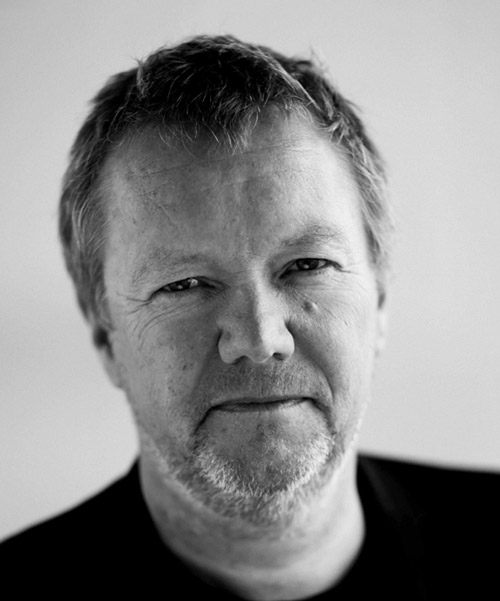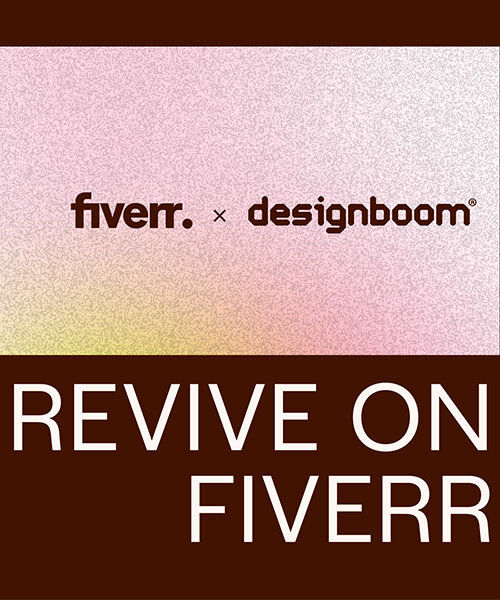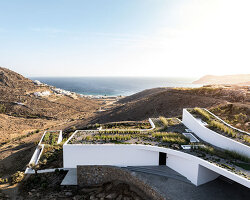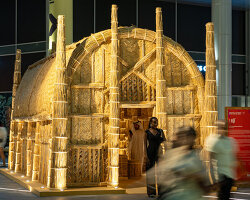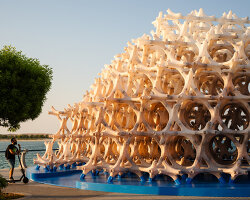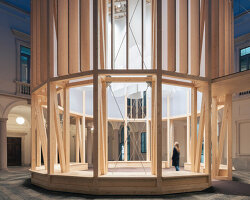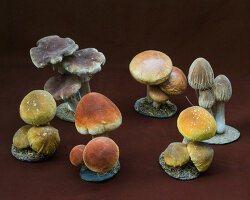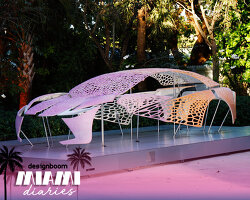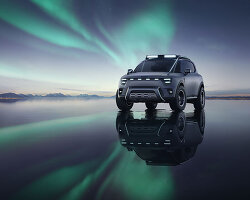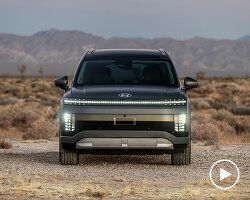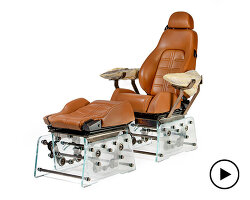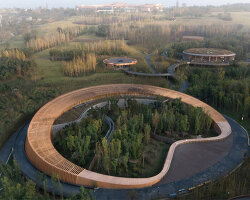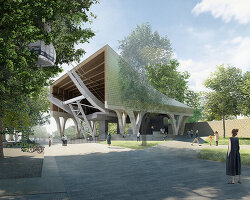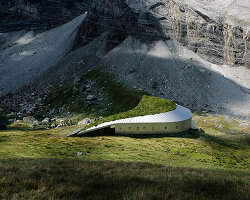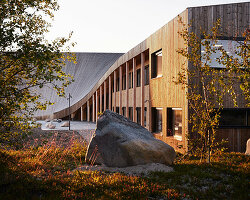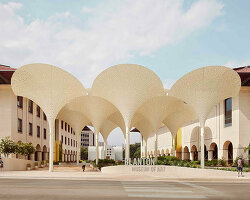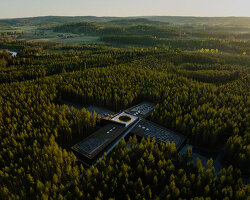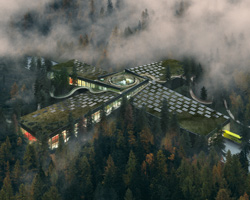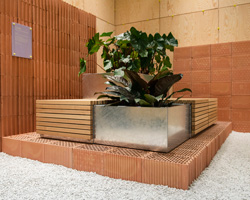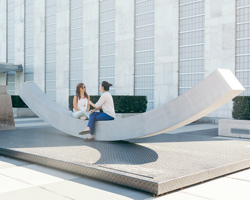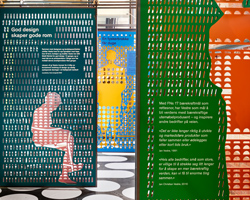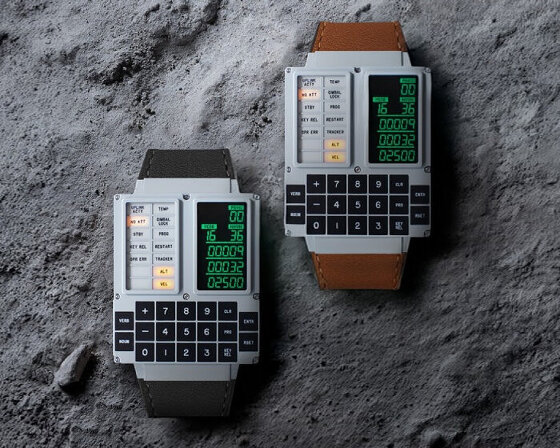a product, a place to sit, or an opportunity to change the world… at the heart of the vestre brand, with its line of brightly coloured and long lasting designs is an optimistic and tenacious ethos to match. an ethos driven by jan christian vestre, the norwegian company’s third generation CEO whose vision for the company is guided by a desire to create outdoor furniture with minimum impact on the environment and a maximum impact on society.
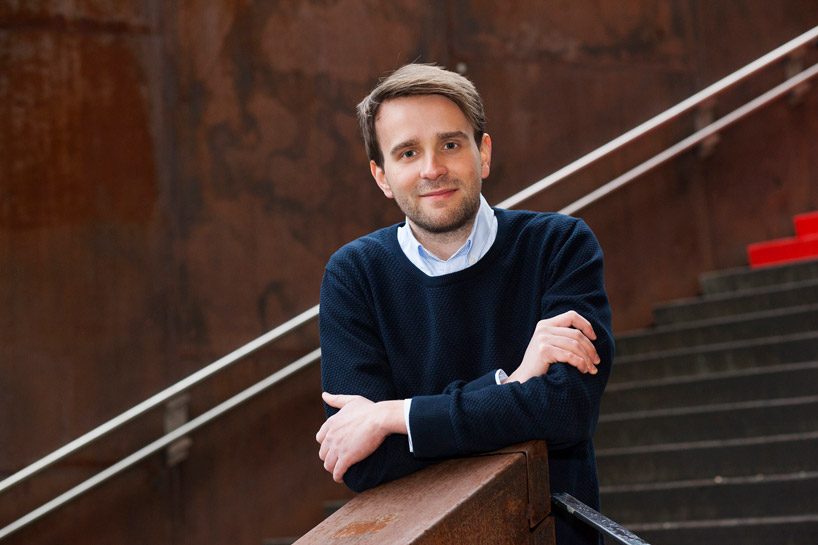
all images courtesy of vestre unless stated otherwise
thought leaders on environmental sustainability and democratic design, jan christian sees outdoor furniture as a set of tools to support societal interaction and progression. these thoughts are shared by their long term collaborator, snøhetta, who have been working with vestre to reimagine the working environment of their production factory in sweden: ‘we share the same views about democracy and transparency, we want to involve people, we believe in diversity and so on. I strongly believe that we don’t just build something or produce something. what we do is contribute to the making of cities more social and more green‘, jan christian explains.
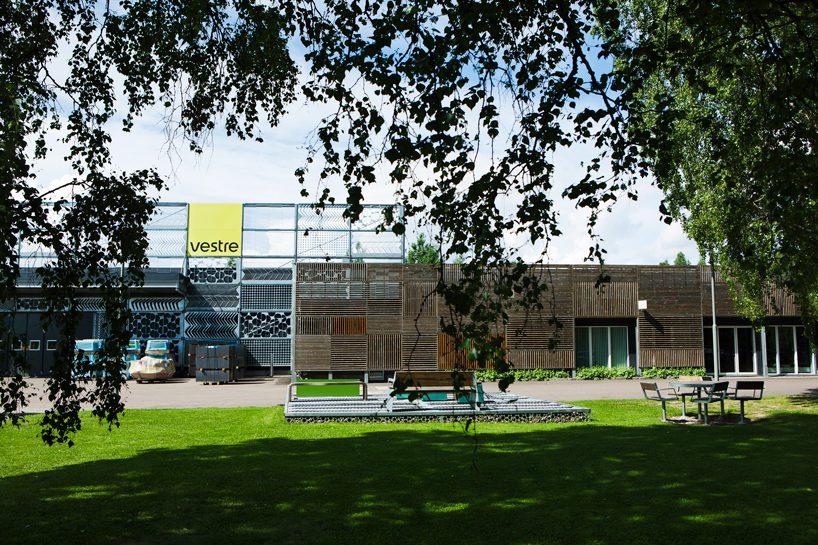
right now vestre’s manufacturing facilities operate on 100% renewable energy including a factory designed by snøhetta hidden in the deepest forests in swedish värmland. by 2020 they aim to produce zero emissions including in transport, aided by the brand’s order of an electric semi truck by tesla.
designboom sat down with the CEO along with co-founder of snøhetta, kjetil trædal thorsen, to learn more about the future of sustainable furniture manufacturing, their burgeoning partnership, and how they define the ideal state of production. as the interview begins talk turns quickly to sustainable furniture-making in relation to the country’s move away from oil and gas…
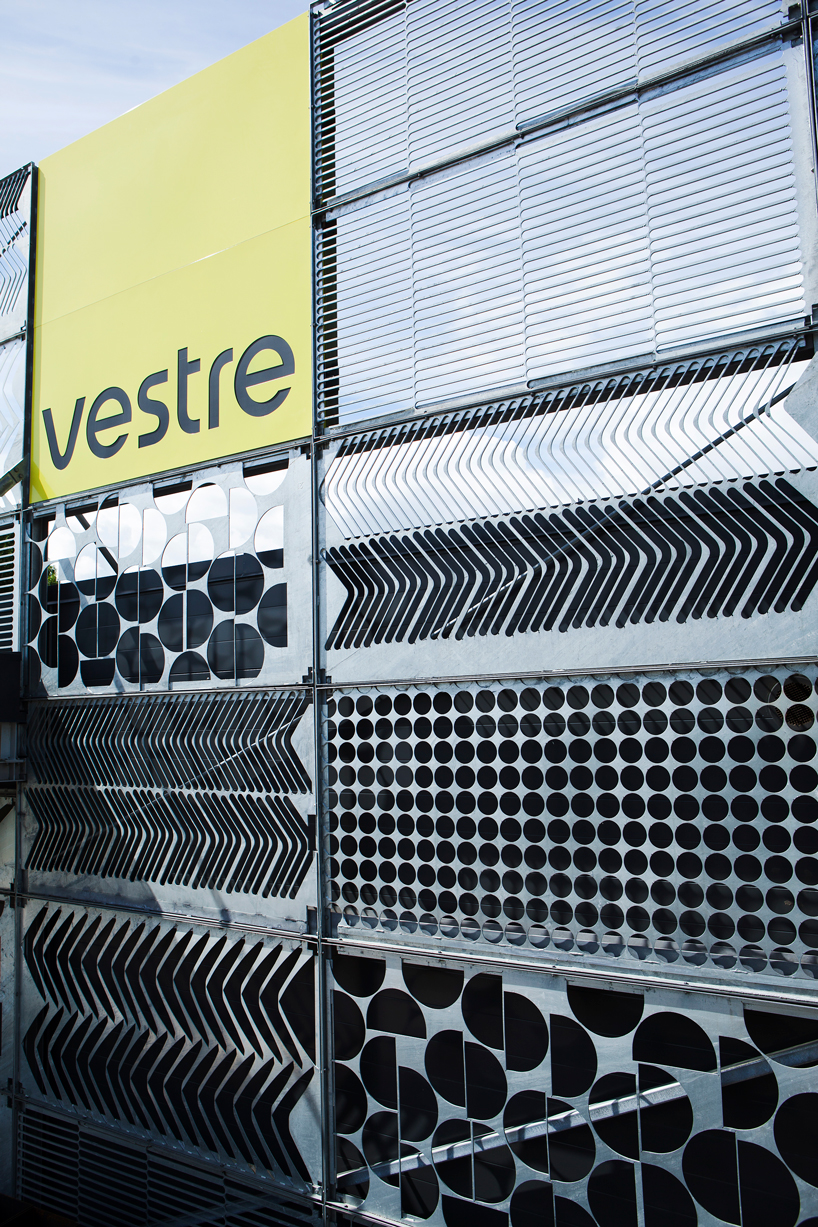
kjetil trædal thorsen: it is interesting to see what happens when you start looking at the possibilities of taking the advantages you have from simple business models like pumping up the oil and selling it, and getting money for it, taking out the fish and selling the fish, and getting money for it. what starts happening when you look at furniture in a production line with a norwegian/swedish base? what happens then, when a totally different knowledge base, that comes out of the oil industry slowly changes the position of industry?
jan christian: we need greener manufacturing on the mainland. we are looking for newer and greener industries to compensate when we are producing less oil and gas. and honestly the world doesn’t need more oil and glass now and so it’s better for instance if we can make green furniture.
db: how do you achieve that goal?
ktt: inclusion. with a much wider and much more horizontal perspective on production lines. so where customers, designers and production lines come closer together and almost operate in the same atmosphere continuously. most processes are funnelling processes – start wide and narrow down as you come towards a result – and you can do that from two sides. normally we are only doing that from a conceptual point of view but what if you did that from a production point of view and a conceptual point so you have a double funnelling.
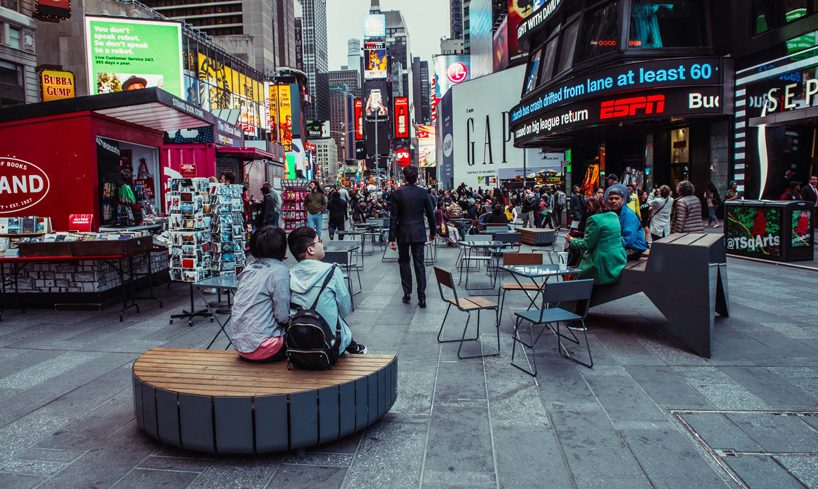
vestre created furniture for the snøhetta redesigned times square, new york
db: snøhetta designed vestre’s oslo headquarters and even designed the exhibition ‘vestre: folk + form’ celebrating the 70th anniversary of vestre. is inclusion the driving force behind your continued collaboration?
ktt: yes and it actually goes as far back as conversations with his father. the first point is debating and discussing everything from politics to production lines to what it means being a human and creating content. his father was a great guy in the discussions around these themes will be ideologies that you start following. what is a new kind of production line? what is the future industry? robots, how do you bring people in? what is the social sensation of a workplace? what kind of people do you need in the future and do you operate with them? vestre’s spirit has been reconfirmed time and time over which led us to believe that they actually believe in what they are saying so it became more than just a salesperson.
jc: that’s the reason we made this building. I remember some people thought we were crazy when we asked snøhetta to do this project because this is in the middle of the swedish forest. normally building factories is about how much you can get for how little but as a design brand it is important for us that this is a 100%, 360 degrees, all year around vision. I want my colleagues here in this factory to be proud of what we are selling. to feel a passion for nordic architecture and design.
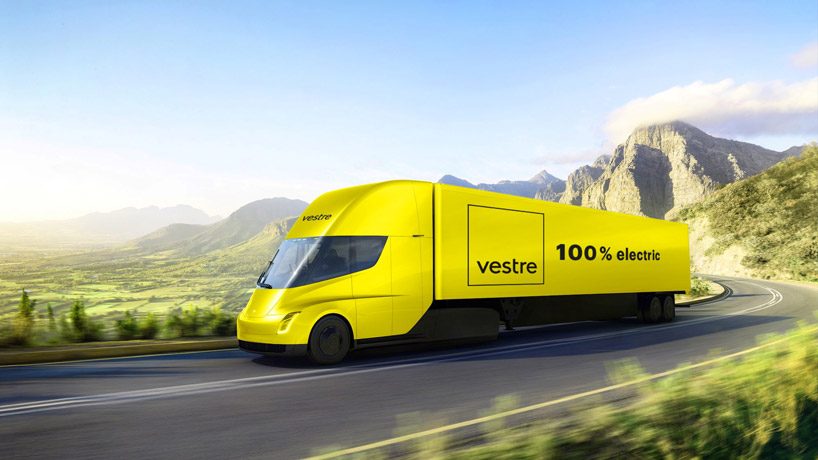
the 100% electric tesla truck
db: how does this play into the visual language of the factory?
ktt: simple ideas like choosing the rest of their production to be part of their expression. all the holes you can see in the leftover materials, we have used them. using those leftovers to reproduce. like the facade, using the leftovers to decorate the factory. simple but important things. entering into the actual factory as well-
jcc: – because it is seldom in factories you see this. usually you have to enter the administration before being able to access the factory. that’s wrong though, what we are doing here is not office work it is all about production manufacturing and the guys here. so when you first enter you can touch, feel, smell and discover all the things we are doing. then if you want to meet the factory manager you can then. the same applies to the board room we are sitting in right now, it opens up to the factory so it is completely transparent. if we are happy, sad, how things are going. we believe it should be this way, it is about democracy and people feeling this is their building and environment.
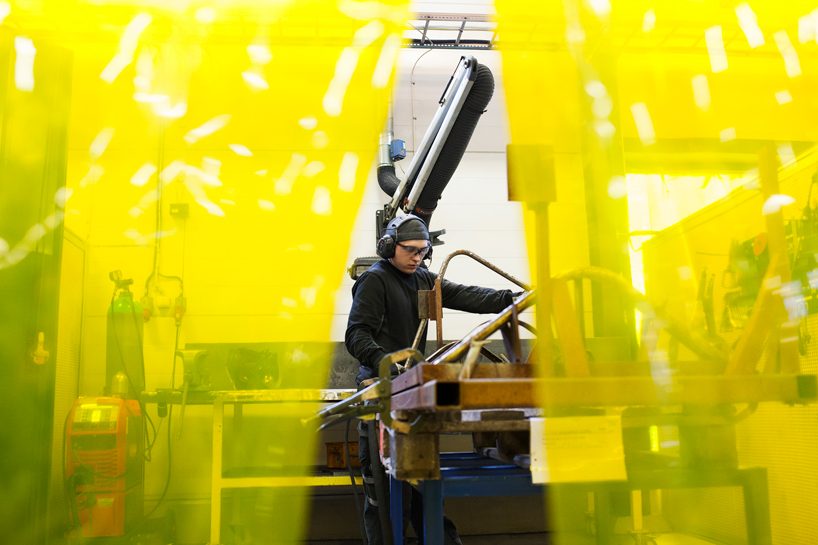
db: how did the workers feed into the idea of creating this concept of an ideal factory?
jc: we had workshops, we had focus groups, they were involved with all of the stages. meetings with them were important. at one point we shared all of the illustrations on the wall and a pencil for people to draw and make whatever changes they wanted. we met challenges though. the office space used to be open and two years ago we developed another 70 square meters giving people their own offices. this is different to how we do things cause creatively we prefer things open but sometimes people desire other needs.
ktt: and the next generation might be different who knows. its a balance that needs to be found. changing perception and inviting people into this is important. I remember the opening night the space was transformed into a concert house where you could dance with the machines, listen to live performances and change what the space means in relation to you. both for the locals and the workers. this relationship to your work is important, giving it more of an identity.
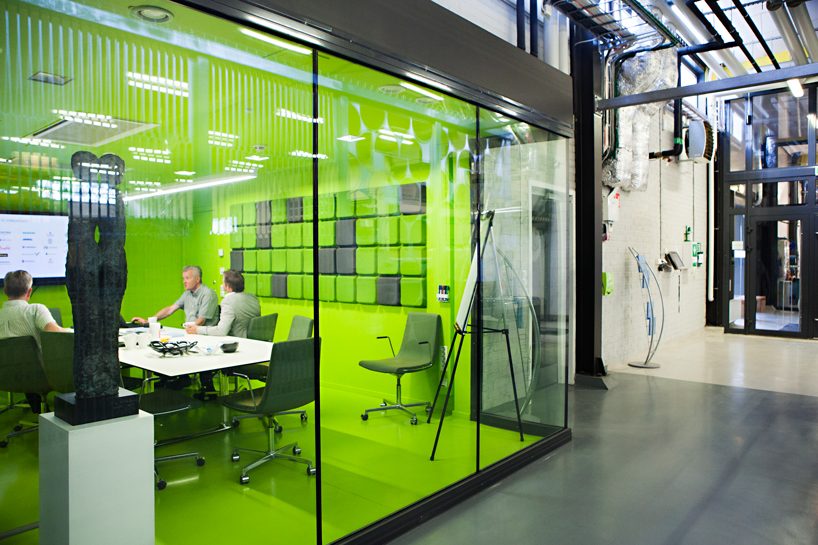
db: and is it a challenge to get public bodies, urban planners and architects on board or has there been some progress in recent years when it comes to them understanding your objectives?
ktt: it is moving pretty slowly I think. continuously we have heard that what you do in norway you cannot do here like the roof of the opera house. people think our minds are already generously social but that is stupidity. from the government perspective in norway they were protecting the marble from graffiti which made it turn yellow. it is all about intimacy, if you create public ownership, it will be taken care of by the public. it is a logical sequence. if I sit on something it is mine. furniture has the ability of enhancing the feeling of ownership and that is why the idea of sitting is just the beginning when considering furniture.
jc: I think people are more aware of it now even if there are some challenges. one company asked us to make park benches with spikes to ward off the homeless and we said no. the client loved our furniture but the people funding the development wanted spikes and we said we couldn’t do it. we believe in social and democratic design, and it is not democratic to have spikes in your cities.
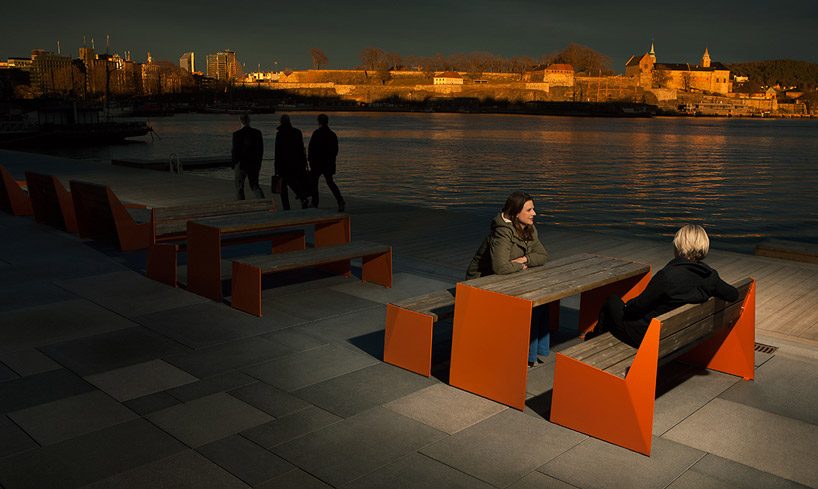
vestre furniture in brygge, oslo makes a dynamic and diverse district accessible to everyone
db: how does vestre’s final product reflect your vision for a better future?
jc: we are a throwaway culture. things are designed to be thrown away which means a lot of waste. we use more resources than we have and that is not long term thinking because we are driven by profits. we deliver all our products with a lifetime guarantee against rust and it’s not difficult to do so. it is simply about how we galvanise our steel the powder coating. it is a very environmentally friendly low-tech process.
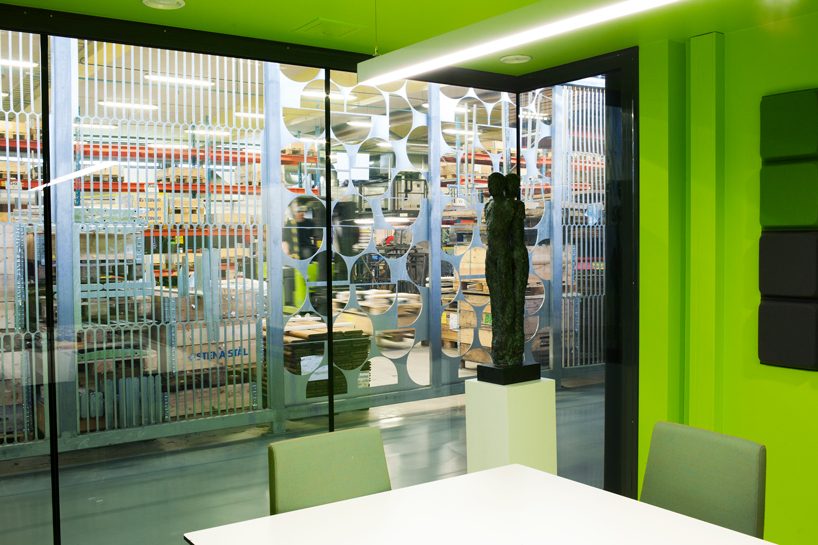
db: why is this idea of positive production so essential now?
ktt: in some ways this attitude is moving back to, not the very first move in industrialisation but with ford maybe, social consciousness, understanding that if you work on a production line you might have to change your position every now and then. companies moved towards becoming socially invested and then it dropped because it became only about the production, more and more specialized and less and less free. maybe now we are trying to regenerate social consciousness into industrial production lines and encourage interaction in between different professions. inclusion means actually inclusion, not just one or two meetings, it is a continuous process that brings into attention these ethical issues that should be debated continuously.
jc: it is how we behave in these communities. we are not the biggest company in the world but we can still do something. we need more companies in the world who are interested in standing for something rather than making money. we have had it that way for years and look what’s happening in the world. if we can have companies driven by values then maybe we can change it and make a movement for a better future.
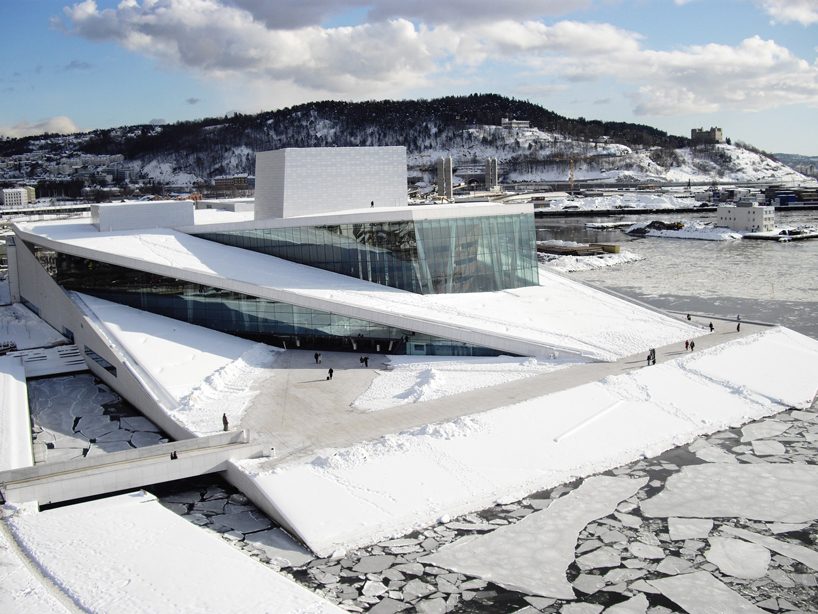
the snøhetta designed oslo opera house
image courtesy of snøhetta
architecture interviews (281)
design interviews (76)
snohetta (185)
vestre (7)
PRODUCT LIBRARY
a diverse digital database that acts as a valuable guide in gaining insight and information about a product directly from the manufacturer, and serves as a rich reference point in developing a project or scheme.
